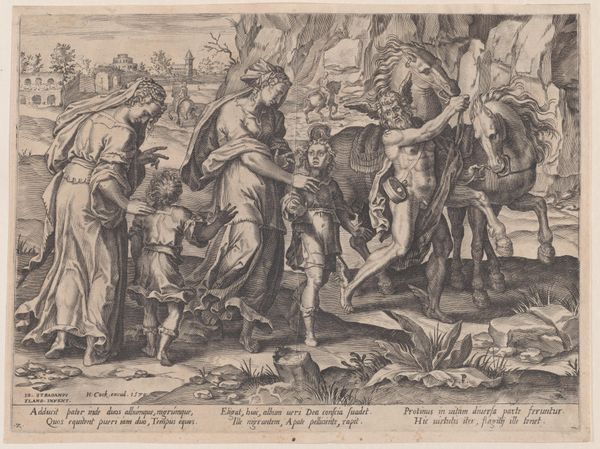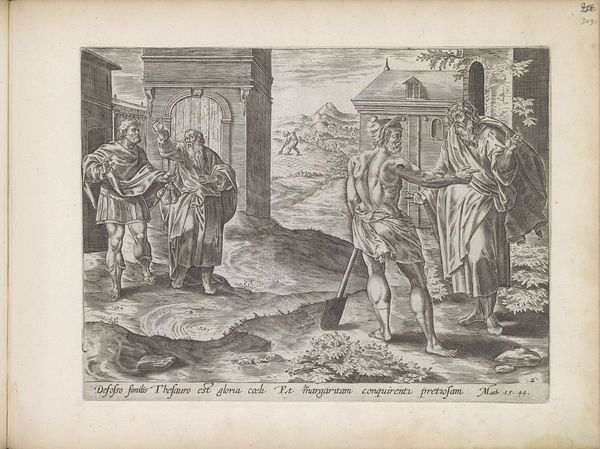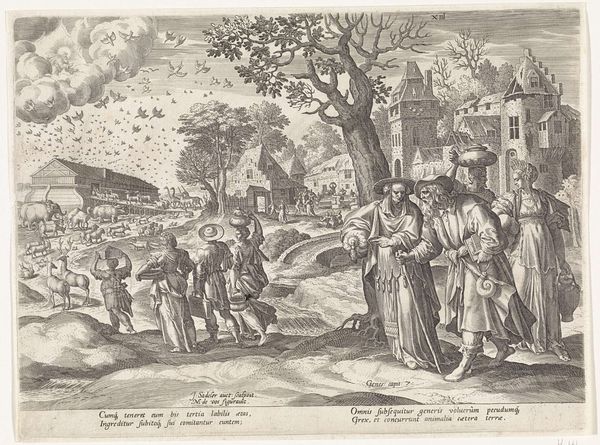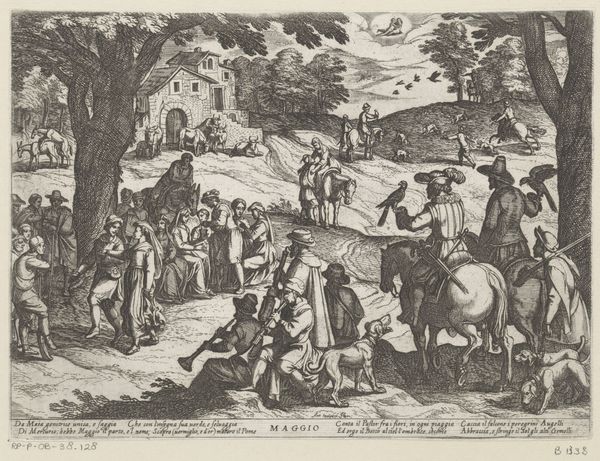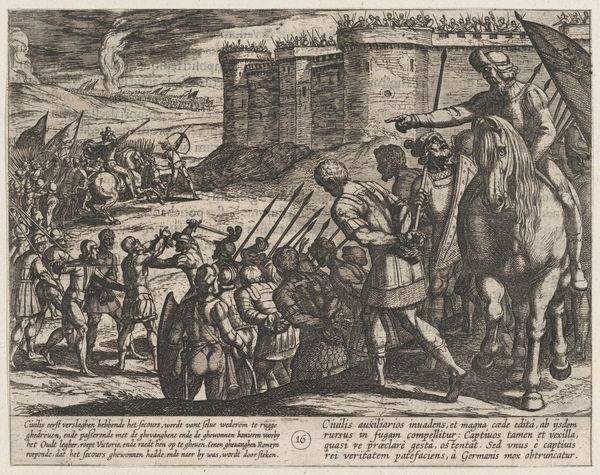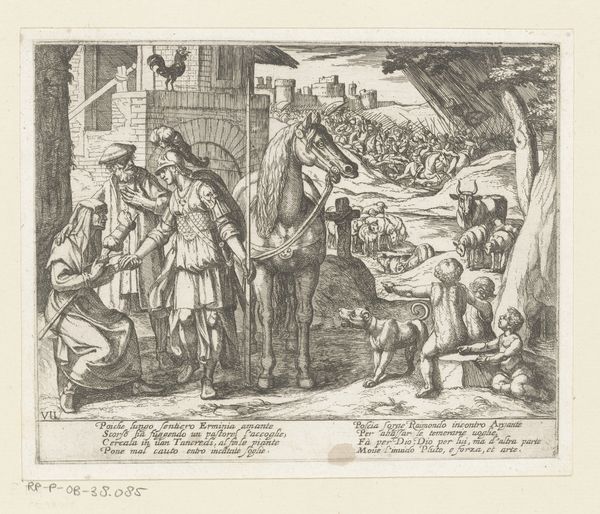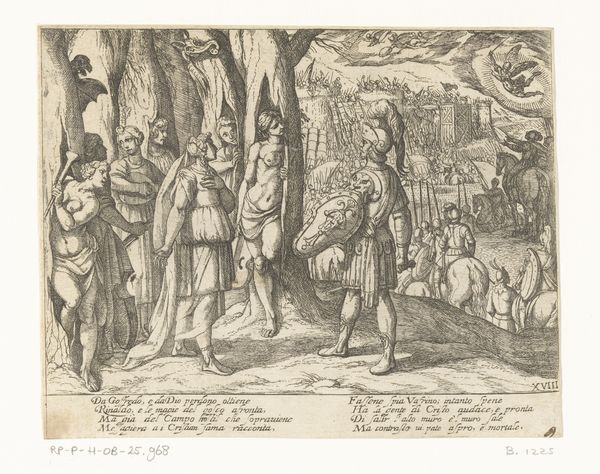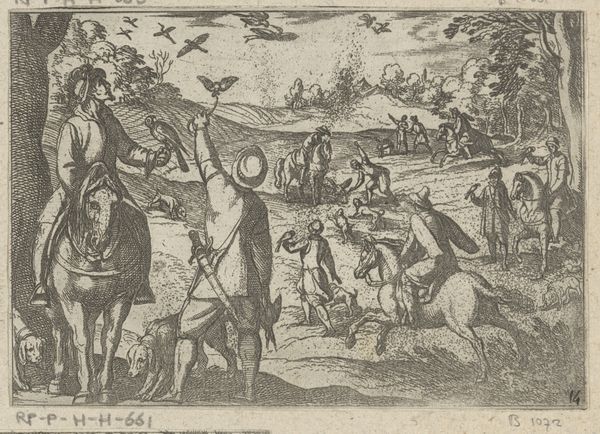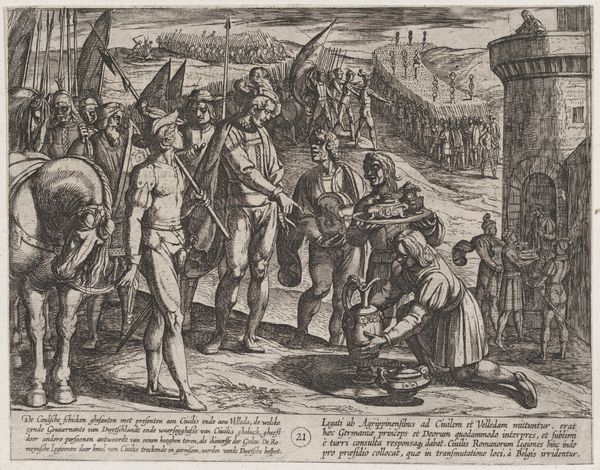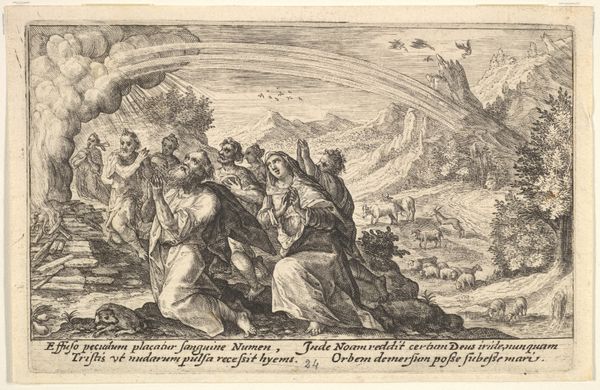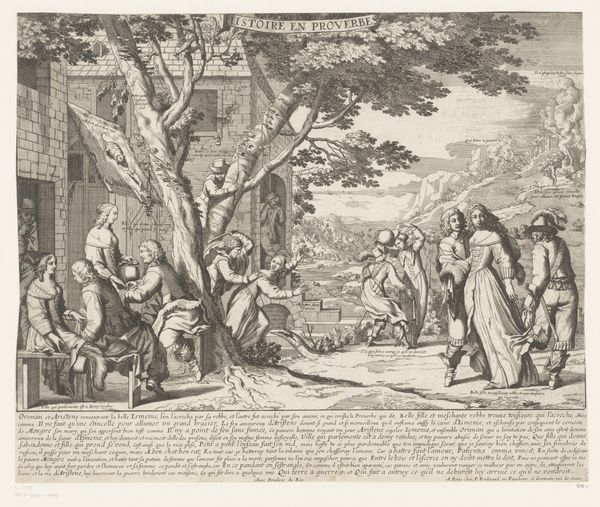
print, engraving
#
ink drawing
# print
#
mannerism
#
figuration
#
history-painting
#
engraving
Dimensions: sheet: 17.8 x 25.2 cm (7 x 9 15/16 in.) sheet: 19.5 x 26.9 cm (7 11/16 x 10 9/16 in.)
Copyright: National Gallery of Art: CC0 1.0
Curator: Look at the swooping figure of Mercury in this 1590 engraving, "Mercury Falling in Love with Herse," crafted by Hendrick Goltzius. Editor: The dynamism is immediate, isn’t it? Mercury appears almost violently thrust into the scene, stark against the intricately detailed backdrop. I am getting a dramatic vibe, definitely a story unfolding here. Curator: Goltzius, celebrated for his Mannerist style, presents a scene from Ovid’s *Metamorphoses*. Let’s consider the tools available to him: an engraver's burin to render the fine lines on the copper plate, the printing press facilitating wider circulation. These processes, in turn, shaped access to and interpretation of classical myths, spreading narrative and style. Editor: And in viewing those very tools, let’s ask what stories those tools perpetuate. This myth centers a powerful god taking advantage of a mortal woman. Where does Herse have agency? Are these women foregrounded or subjugated by that flying, thrusting god? How did access and privilege at this time amplify inequity? Curator: True, Mercury's power dynamic casts a shadow. Technically, note how Goltzius uses varying line weights to create depth, making Mercury pop against the landscape with the female figures situated nearby. What do you think of their portrayal, particularly in terms of contemporary social norms and gender roles? Editor: We must note how the "virgin choir" adheres to imposed societal expectations for women's comportment, a standard weaponized against those who diverged. It serves to heighten our contemporary discomfort, to underscore that tension. What choices were denied them in life, as in art? What were the historical pressures around idealized female representation in the 16th century, especially in mythological narratives? Curator: Precisely. The print served not just as art but as a social mirror, reflecting ideals, constraints, and the means to disseminate them. We are reminded that Goltzius worked during a period of increased production. These mass-produced images held societal values. Editor: Thank you, understanding it from this material lens helps deconstruct ingrained patriarchal power structures. Viewing its dissemination in this historical context helps bring the present inequities to light. Curator: Indeed. Analyzing process allows one to unearth many complexities, revealing historical as well as lasting cultural impact.
Comments
No comments
Be the first to comment and join the conversation on the ultimate creative platform.
